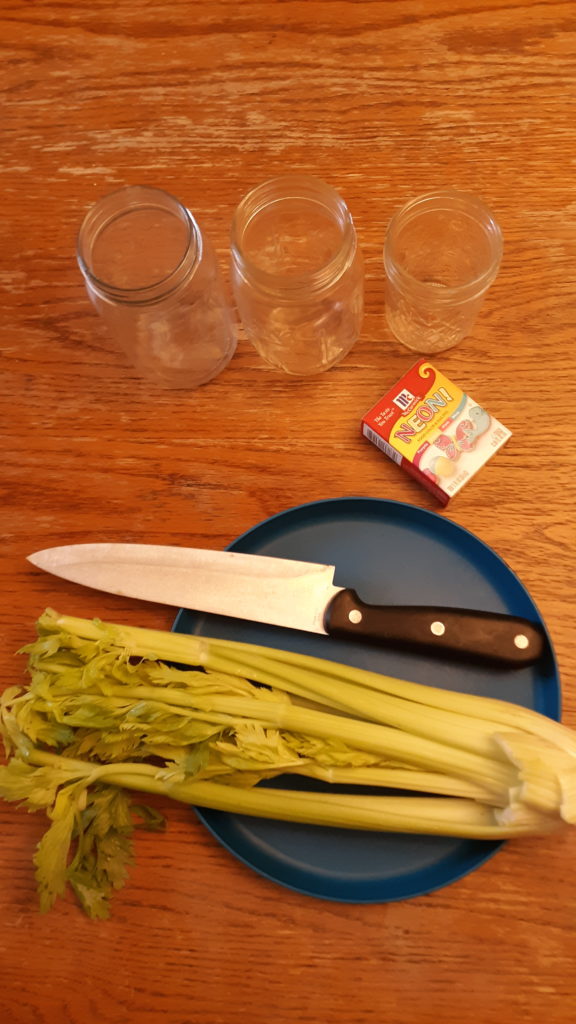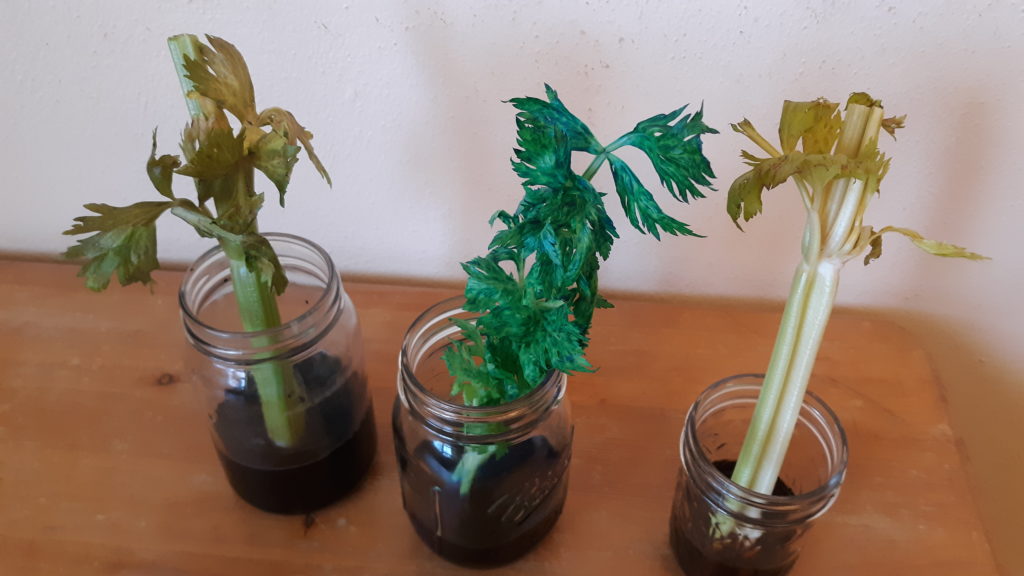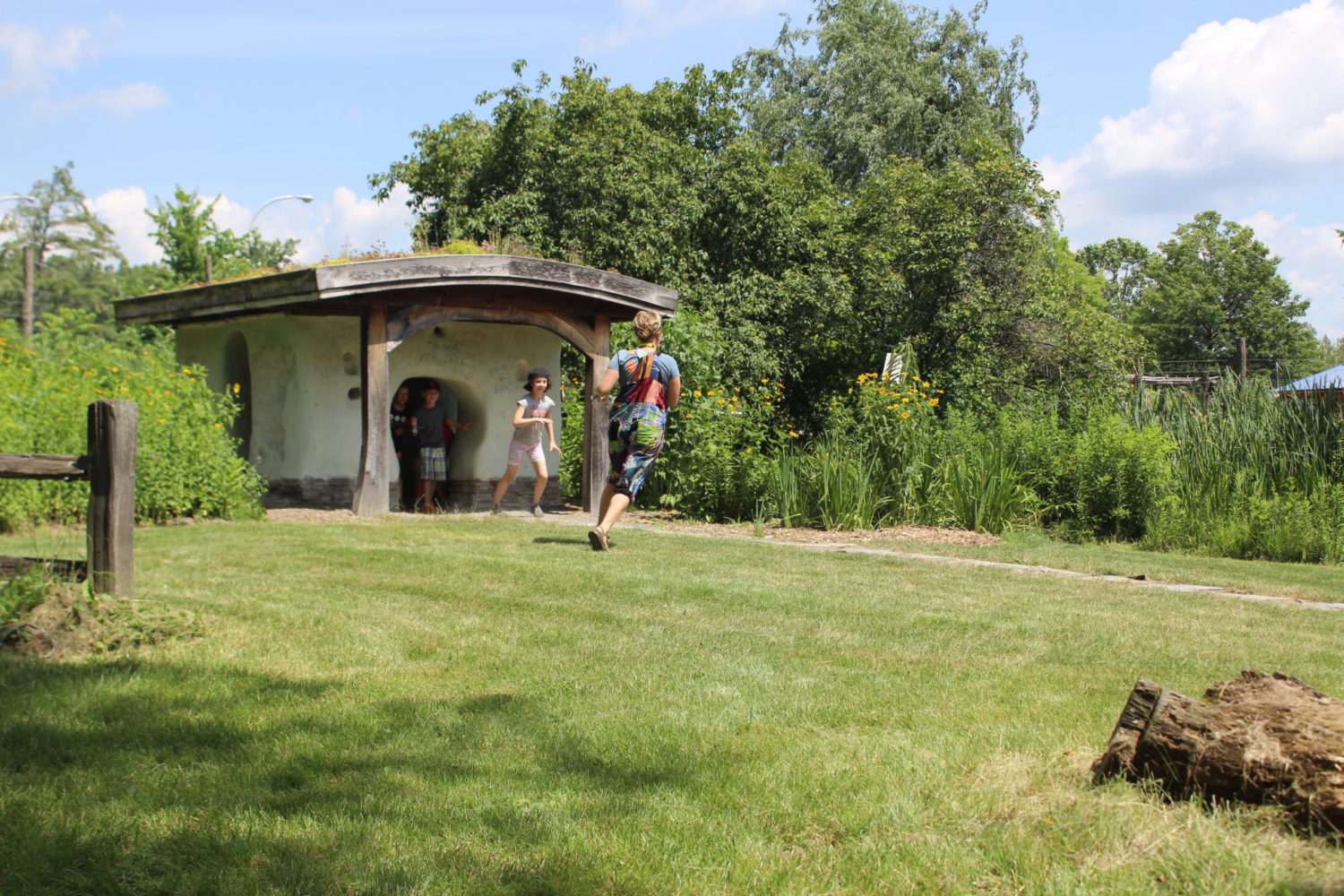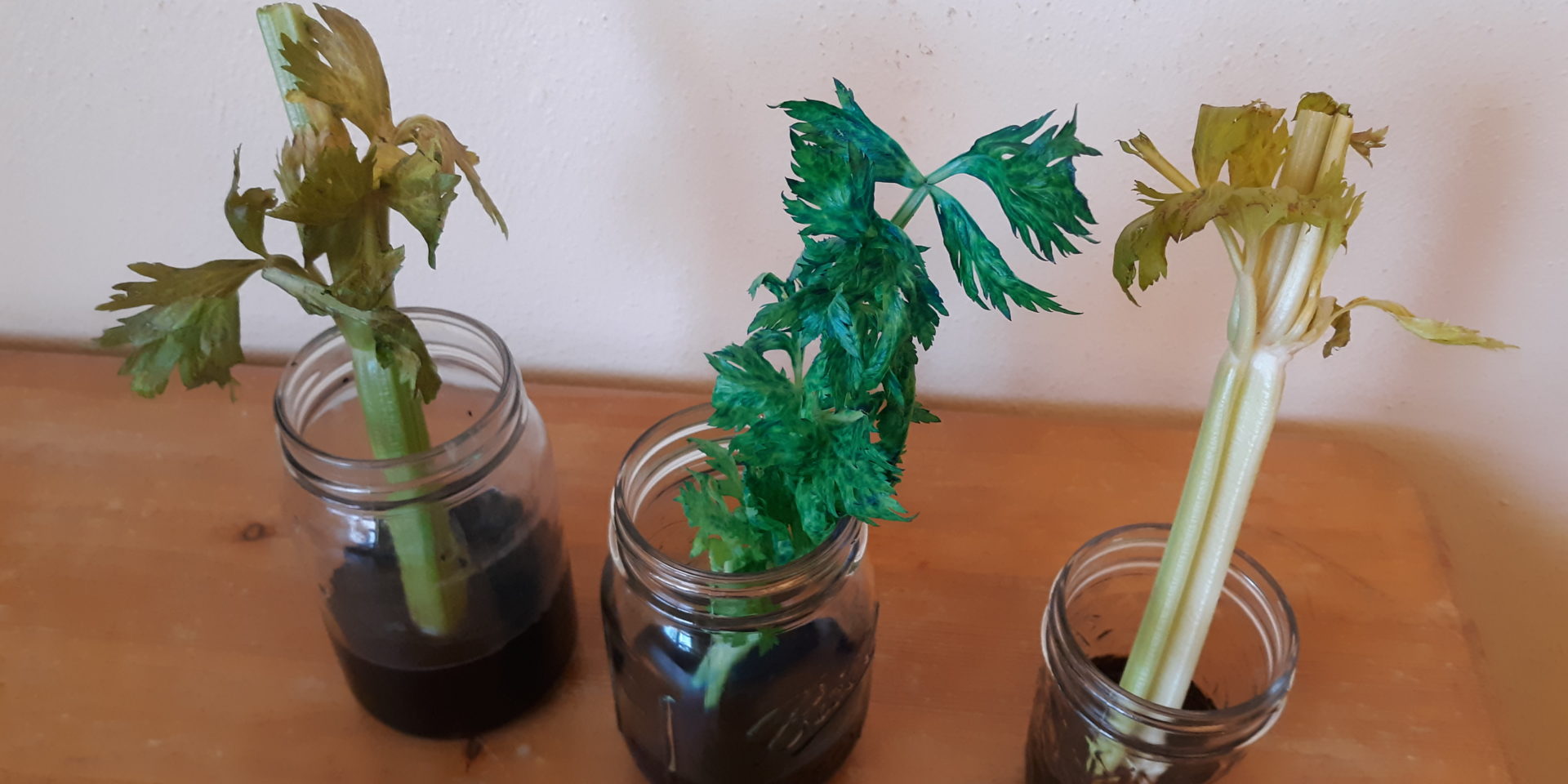How do plants “drink” water?
Have you ever been curious about how plants “drink” water?
Just like humans, plants need to move liquids through them to consume nutrients. In this experiment, we’ll add food coloring to water to see the water travel up the stem of celery and color the leaves.
Plants, here we will be looking at celery, have tubes inside their stems called xylem. Xylem is made of vessels connected end to end and act kind of like straws. They are hollow and strong. Water is absorbed by the roots and travels up the xylem to the leaves.
Fun fact: the tree rings you see on stumps or logs of trees that have been cut down are what remains of old xylem tissue.

Materials:
- 2-4 celery stalks with leaves
- A container for each of your celery stalks
- food coloring
- water
The steps:
- Cut three – or however many you want to test – stalks of celery. Make sure to choose stalks that have leaves!
- Fill your containers a little more than half with water
- Add 10-20 drops of food coloring to each container. Try different colors and see what happens.
- Add one stalk of celery to each container.
- Check on your celery a few times a day. When and where do you notice any color change? How long did it take to see color in the leaves?

Extension ideas:
- What other vegetables, plants, or flowers could you try this experiment with?
- After the experiment is done, take your celery out of the water and cut the stem in half. What do you see?
- Does water travel faster or slower on a hot or windy day? Isolate one stalk of celery. With another stalk, put it near a fan blowing on the leaves or in front of a hairdryer. Does the water move faster or slower with the fan/hairdryer?


















